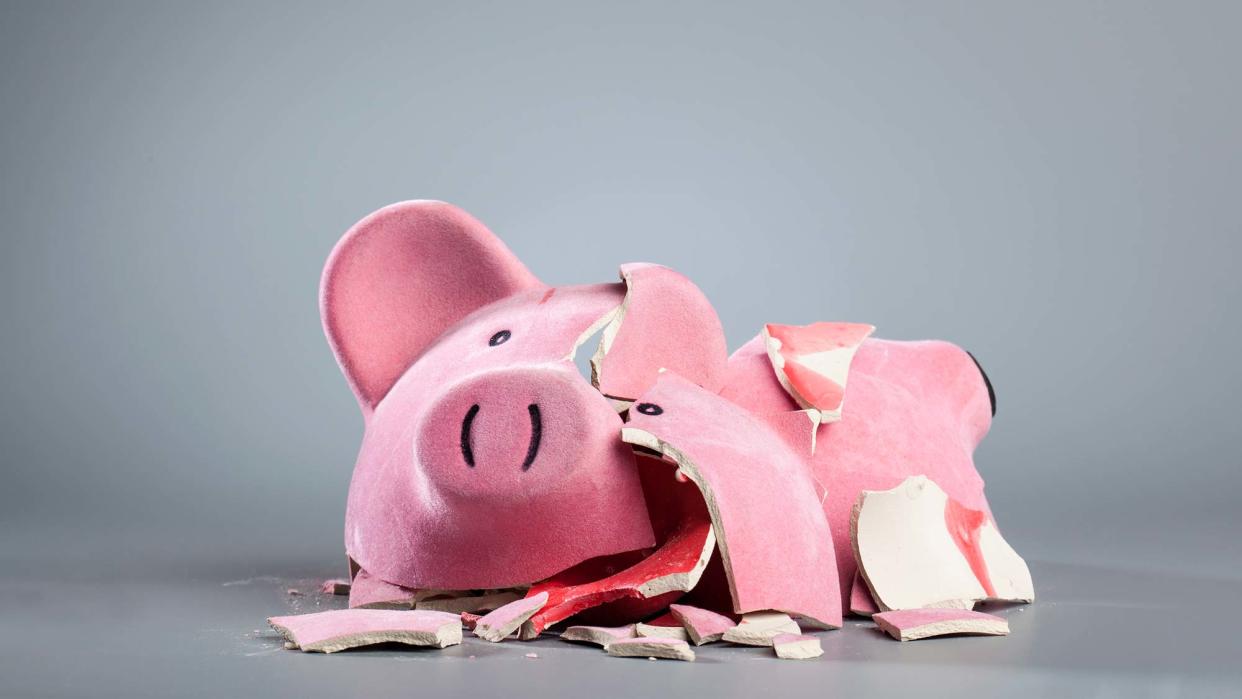How to Buy a Home With No Money Down (You Really Can!)
MichaelJay/iStock
Drumming up money for a down payment on a home can feel like a lost cause: After you’ve shelled out money for rent, gas, groceries, and other expenses, you might have little or nothing left over. Which may have you fantasizing: Is there some secret out there, somewhere, that could show you how to buy a home with no money down?
Believe it or not, it’s not just a pipe dream.
First, some background: Home buyers who apply for a mortgage are typically advised to put down at least 20% of the price of the home. With the national median home price hovering around $240,900, that ends up being $48,180. Ouch! Yet an overwhelming 69% of Americans have less than $1,000 in savings, according to a recent survey by GOBankingRates.com. To these people, buying a home may seem woefully out of reach.
But the good news is that there are absolutely legitimate ways to put down much less, or even nothing at all. Here are some options to consider.
USDA loans
In an effort to fill underpopulated areas of the U.S., the U.S. Department of Agriculture’s Rural Development office provides mortgages with down payments as low as 0%. The catch? These loans are offered only in towns with populations of 10,000 or less. Still, 10,000 is quite sizable for most towns, so 97% of the U.S. is covered. So don’t write it off until you check whether the area you’re eyeing (or something nearby) qualifies at USDA.gov.
USDA loans also go to those who qualify as having low or moderate income. But there’s a whole lot of wiggle room in the words “moderate income,” too. In areas near San Francisco (yes, USDA loans are offered there), an individual making $141,000 is considered “moderate income.”
Credit unions
Credit unions—nonprofit banking cooperatives—often offer mortgages to members requiring a low or no down payment. To qualify, you’ll typically need to have a good credit score and earn less than 80% of the area’s median income, but those requirements can really run the gamut.
Case in point: Recently, the San Francisco Federal Credit Union offered 100% financing on homes worth up to $2 million to borrowers whose incomes could be as high as $219,000 per year.
VA loan
The U.S. Department of Veterans Affairs’ loan program, which began with the creation of the GI Bill of 1944, gives active or retired military—or a veteran’s surviving spouse—the opportunity to purchase a home with no money down.
VA loans also offer attractive interest rates, because they’re not based on a borrower’s credit score, says Katie Miller, vice president of mortgage lending at Navy Federal Credit Union. Given these perks, a VA loan is often your best mortgage option—if you qualify.
“Requirements are fairly stringent,” says Miller. VA lenders are typically looking for a credit score of 620, and every VA purchase loan requires a special appraisal, which includes the valuation of the property and a close check of the home’s condition. Consequently, some homes are not eligible, although plenty are—it just means you may have to choose wisely.
Navy Federal loan
Speaking of credit unions and the military, the Navy Federal Credit Union offers 100% financing (read: no money down) to qualified members. Eligibility is restricted to members of the Department of Defense and Coast Guard active-duty, civilian, and contractor personnel and their families. As you might have noticed, a Navy Federal mortgage is almost identical to a VA loan; the main difference is that Navy loans have slightly higher interest rates.
Down payment assistance
Depending on your credit score and income, you could qualify for one of over 2,200 down-payment assistance programs nationwide, which help out home buyers with low-interest loans, grants, and tax credits. As Jonathan Smoke, chief economist of realtor.com®, explained, “Consumers do not know about these programs, and those that do assume it’s more difficult to get than it is.”
Granted, you may still need some money for a down payment, but much less than you’d think: Home buyers who use down-payment assistance programs save an average of $5,965 upfront at the down payment stage, and $11,801 in monthly house payments over the life of the loan.
To find down-payment assistance programs, you can search by checking your state on the Department of Housing and Urban Development website or using Bank of America’s recently launched database of local programs.
Bottom line: No one should write off their dreams of homeownership purely because they can’t fathom coming up with a down payment. There’s always hope, so don’t write your options off until you check into them. Who knows? You might end up pleasantly surprised.
The post How to Buy a Home With No Money Down (You Really Can!) appeared first on Real Estate News & Advice | realtor.com®.




